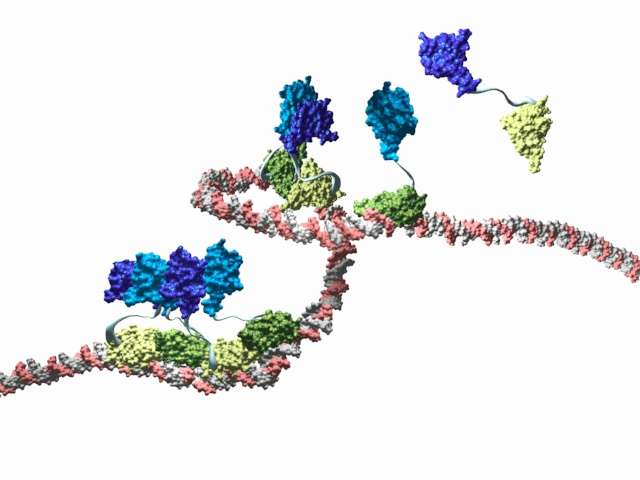Binding to produce flowers

The LEAFY protein, a transcription factor responsible for flower development, is able to assemble itself in small chains made up of several proteins. This mechanism allows it to bind to and activate regions of the genome that are inaccessible to a single protein. These results were obtained by scientists in the Laboratoire de Physiologie Cellulaire Végétale (CNRS/Inra/CEA/Université Grenoble Alpes) and the Institut de Biologie Structurale (CNRS/CEA/Université Grenoble Alpes), working in collaboration with their international partners. Published on 21 April 2016 in Nature Communications, they open the way to new research opportunities regarding the regulation of gene expression.
The LEAFY protein plays an essential role in the beauty of the plant kingdom: it governs the development of flower buds and their different organs (sepals, petals, stamens and pistils). This protein is a transcription factor that is necessary to decipher the genetic code and is endowed with two important domains: one that binds to DNA to activate floral genes, and the second of a hitherto unknown type.
The scientists have demonstrated that the latter is a so-called "oligomerization" domain that allows the LEAFY proteins to assemble in small chains. In this form, they become capable of binding to compacted regions of the chromatin while a single LEAFY protein cannot achieve this. The experiments performed suggest that once assembled in chains, the different DNA binding domains cooperate, thus improving their binding to regions that are normally too condensed to be recognized. LEAFY can thus activate the genes at the origin of the development of flower organs.
LEAFY may therefore play the role of a "pioneer factor" capable of binding to the dense chromatin structure of certain genomic regions and initiating epigenetic changes that lead to gene expression. Human beings and animals do not have the LEAFY protein but other transcription factors containing oligomerization domains. These new findings therefore suggest that these domains may also contribute to giving pioneering properties to transcription factors in other kingdoms. This work thus opens new avenues for understanding the role of these factors in the regulation of gene expression.
More information: Camille Sayou et al. A SAM oligomerization domain shapes the genomic binding landscape of the LEAFY transcription factor, Nature Communications (2016). DOI: 10.1038/NCOMMS11222
Journal information: Nature Communications
Provided by CNRS



















